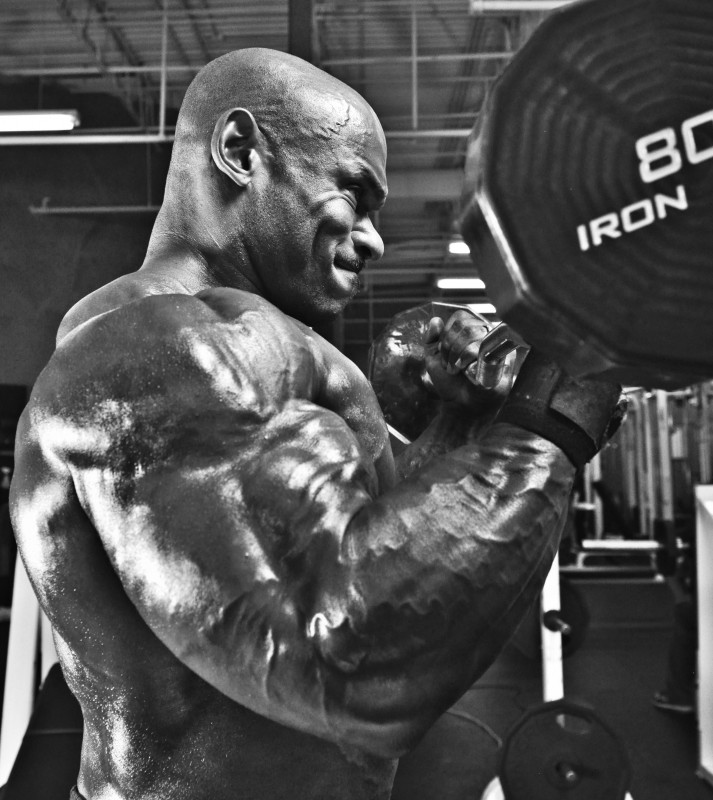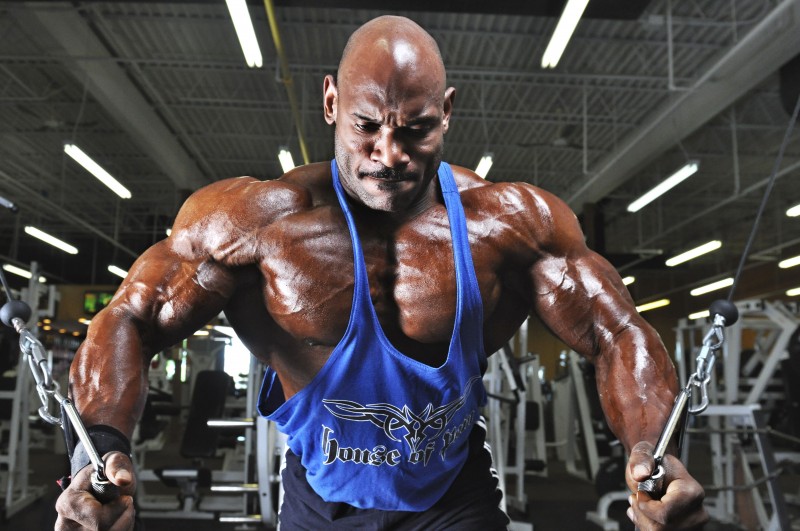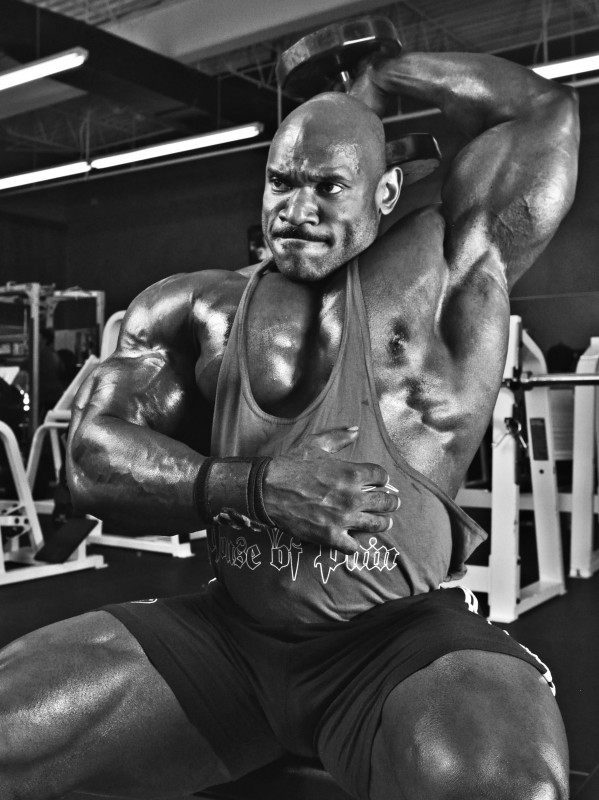
I've always had a keen interest in reaching a global understanding of what drives and creates strength, muscle and performance. And I’ve always had a passion for creating those effects and changes through training.
In the past six months, I've been training at Relentless Performance. I've been able to apply various protocols with our members that I wasn't able to test prior on large populations. With over 150 members, I've been able to implement my methods, observe the effects and adjust as necessary. I don't always have an “answer” as to why something works when I try it out. Truthfully, I experiment on clients every day, and what I discard far outweighs what I hold on to.
The principles of biology and exercise are clearly defined, but the application thereof varies constantly. Recently, I've found high rep training to be very effective and not simply doing sets of more than 15 reps but creating specific sequences of exercises for “total” muscle hypertrophy. What follows is both the historical and scientific background of what I’ve deemed the “Relentless Hypertrophy” protocol.
History of High Reps and Why Exercise Sequencing Matters
If one was to study training literature from the turn of the 20th century, you would find that high reps were very often recommended by old time Strongmen and physical culturalists as a means of increasing work capacity and muscle and improving skill with movement. The examples are too many to give, but the concept is one that is seen over and over in writings by men such as Arthur Saxon, Eugen Sandow, the Great Gama and many others. Interestingly, many of these men credit very high rep training (reps beyond 20) as the means to which muscular bulk is best created.
RECENT: Perspectives on Hypertrophy
Now, lest anyone take things out of context, these are observations, not statements of fact. I'm well aware of the current body of evidence in regards to hypertrophy, rep range and intensity. The operative point in regards to the history though is that very high reps have been both applied and observed to stimulate hypertrophy for well over a hundred years. Going even further back into the study of classical Indian wrestling or martial training dating back to the Spartans and ancient Greeks, there is application of very high reps for the express purpose of greater muscularity.
Moving into more modern history, we also have evidence of classical age bodybuilders using high reps in their training for increased muscle mass. Steve Reeves, winner of the 1947 Mr. America and the 1950 Mr. Universe, was the first bodybuilder to heavily utilize higher rep isolation movements in his training for means of creating a more muscular and more aesthetic appearance. While early bodybuilders were often noted for their bulky and smooth appearance and emphasis on compound movements, Reeves was considered the first bodybuilder to apply a “mixed” format to his training. He used low, medium and very high reps, and his workouts were a mixture of barbells, dumbbells and pulley exercises (today we call them cable movements).
While he was somewhat critiqued by other bodybuilders for doing “sissy” exercises in much of his training, his physique was also otherworldly for the time. He pioneered the look of wide shoulders, a small waist and well defined legs with a more “chiseled” appearance.
Moving into the 1960s, we have Vince Gironda. Gironda was the world’s first bodybuilding “coach” and arguably the world’s first personal trainer. Working out of North Hollywood, California, he pioneered many concepts of hypertrophy training that have been proven by research today to be “true.”
There are two concepts that I want to highlight:
- The four sides of a muscle: This was Gironda's observation that a muscle's overall development was influenced by its anatomy and function and that hypertrophy was joint angle specific. A muscle had origin, insertion and medial and lateral aspects. You could stimulate hypertrophy along specific aspects of the muscle through exercise selection.
- Compound training: For complete muscular development, performing sequences of exercises that worked all four “sides” of the muscle yielded total development. The rep range for these exercises will be moderate, within the 8–12 range.
Modern Influences
Moving into the modern era, there are two individuals I want to highlight. Charles Staley has been in the fitness industry for 20 years and is known for his novel approaches. One concept that he revitalized was Gironda’s concept of training “density,” the idea that the intensity of stimulus relative to time worked was a major factor in adaptive response. Staley popularized the practice of escalating density training (EDT). EDT sets are timed sets done for 10–15 minutes and alternating between exercises. Staley recommended starting with your 10RM for each movement and then simply dropping off reps as fatigue set in. This method was fast, hard and very effective for hypertrophy.
The other individual I want to highlight is Swede Burns. Swede is a good friend, and I've praised his coaching ability and methods many times. His past article on metabolic hypertrophy had enough similarities with my own protocol that I had to mention him and give him credit. Swede's strategy is similar to Staley's in that you perform timed sets. With Swede's protocol though, you perform an isolation exercise and do it for very high reps, starting at 25 reps a set. These metabolic rounds are meant to be done with a partner, trading off sets for 10 minutes straight. Swede has used this method with very advanced lifters and found that it works extremely well.
Now, history stated, let's list some basic “evidence” that research has demonstrated:
- Muscle can be built with both high and low reps.
- There is a dose response relationship with training volume and hypertrophy. More stimulus, to a point, leads to more hypertrophy. Over stimulus leads to overtraining.
- When volume is equalized, both high reps and low reps are pretty similar in their hypertrophic response.
- Higher reps are observed to be easier to recover from than lower reps. For reasons that are obvious to anyone who lifts weights, high intensity lifting above 85 percent is harder on the body (for reasons stated in my past article).
There is nothing controversial about any of the above. Biology deals with stimulus, organism and adaptation. Muscular growth is an adaptive response by an organism after stimulus has been applied. Adaptation happens after recovery. This last point is what I'll close with.
The Relentless Rationale
Let's start with the following premise—if you were given 2–3 days a week to train women, who are all relative beginners to lifting, and your requirement is to build as much muscle on them as possible in the shortest time possible, how would you do it?
The above situation is the common profile of our membership at Relentless Performance. I’ll include a point that Swede Burns made in his past article: "Observation—women who participate in CrossFit seem to be very muscular, and the high reps that are performed seem to be to their benefit."
RELATED: Metabolic Stress Based Hypertrophy Training
Now, this can, of course, get picked apart, but let's just go with it, as I've observed the same thing. Women either respond better to higher reps than men and/or they can handle more volume than men. Due to the innate sexual differences in muscle composition, we know that women generally have less type II muscle fibers than men. We also know that women hormonally have far less testosterone.
These physiological differences mean two things:
- Women have more type 1 muscle fibers. Because of this, women can handle seemingly more reps than men can at the same intensities. They also respond very well to higher reps as well as high set, low rep sets.
- Because of point one, women don't have the same maximal intensity threshold as men (unless a woman is an advanced lifter). The number of reps at given intensities will be higher in comparison to a man but with a sharp drop off at the highest levels of intensity.
In layman's terms, beginner women don’t have a true one-rep max. They’ll have repetition maxes with a given weight and then a sharp drop off in performance when the load gets too heavy. Because of this, rep calculators generally won’t be accurate. And again, this is beginner and intermediate women.
So with all this taken into account, what did I arrive at? I wanted to create a training model that would maximize hypertrophy in minimal time and that would be “low tech, high effect” in its design.
The Relentless Compound Protocol
I created the following model. This is designed expressly for muscular hypertrophy. Strength is the secondary effect.
First, select a muscle group. Next, select 3–4 exercises that work the muscle through all of its respective functions. This requires an understanding of the muscles anatomy and its lines of movement from smallest to biggest and primary to second. Refrain from selection exercises that train the same movement aspect twice (e.g. pairing a flat dumbbell press with a push-up or single-arm dumbbell row with a renegade row).
Select movements that have sustained tension (e.g. cables, bands, dumbbells or body weight). Generally, I wouldn't recommend barbell movements, but they can be used when appropriate.
Sequence these exercises so that each movement's range of motion progresses into the next movement's range of motion. Perform each movement for 10–20 reps. Rest minimally between movements but take about a minute of rest after completing the whole sequence. Perform the entire compound set for 10 minutes straight, aiming to complete 3–5 rounds.
Here's an example:
- Wide grip pull-down (vertical overhead)
- High angle banded row with D-handle (pulling from 60 degrees)
- Inverted row with TRX (pulling from approximately 90 degrees)
The above would be a three-exercise sequence and clearly illustrates the range of motion compass principle. It also utilizes different grips—pronated, neutral and supinated. This balances the development of the back and shoulders and helps to avoid overuse of any one position.
Following a compound set being completed, you have the option of utilizing an appropriate barbell or dumbbell movement. This is done for lower reps (anywhere from 3–10) and is performed for 3–7 sets (depending on the reps per set). Alternatively, you could also do this “heavy” movement first as a straight set and then follow it up with a compound set.
Sample Upper Body Workout
- A1. Seated close grip banded pull-down, 12–15 reps
- A2. High angle wide grip Gironda row to the neck, 15–20 reps
- A3. Yates row (supinated barbell row), 10–12 reps
*Perform the above three times through.
- B. Stiff leg deadlift, 5 sets of 6 reps
- C. Seated dumbbell press, rest/pause ala DoggCrapp training
- C1. Front dumbbell raise, 12 reps
- C2. Lateral dumbbell raise, 12 reps
- C3. Banded rear delt fly, 20 reps
*Perform the above sequence for four rounds.
- D. Flat bench dumbbell press, 3 sets of 6–8 reps
The above is a working example of the protocol put into practice. The protocol isn't a “workout” but rather a strategy that can be incorporated into the overall programming.
It works the muscle through its entire functional anatomy. The higher reps stimulate growth and work especially well for women who are “slow twitch” dominant. It ensures joint health and integrity by not overtraining any one line of movement. By pairing it with a heavy compound exercise, you get both hypertrophy and strength in the same workout.
If I was to simplify it further, perform a tri-set for hypertrophy and then do a low-rep movement for strength. You can hit 2–3 muscle groups in a workout that way in fewer than 60 minutes.
In Part II, I’ll list protocols for all the major muscles groups.
Photos courtesy of Jeffrey Sygo of www.symiphotography.com














Do you think this would work well with 5/3/1 as the strength part of the workout?
Even Possibly with FSL as the only other assistance?